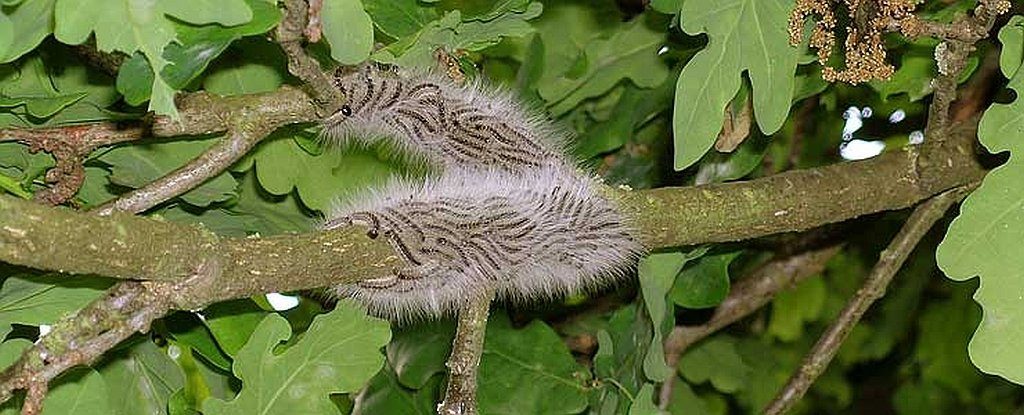
London is under siege by an invasion of processionary moths.
A plague of toxic
caterpillars which can cause life-threatening asthma attacks, severe vomiting and skin rashes have invaded the UK, environment officials have warned.
The larva of
oak processionary moths have been
spotted across the south-east of England.
And with more than 600 nests appearing in parks and gardens, the Royal Forestry Society has warned: "It's time to be vigilant."
But how dangerous are the creatures and what is the best way to protect against them?
How dangerous are oak processionary moths?Put it simply, pretty dangerous,
Small, sharp hairs covering the caterpillar's entire body
contain thaumetopoein, a toxin which, as well as potentially causing asthma attacks and vomiting, has also been known to result in dizziness, fever, and eye and throat irritations.Pets are equally at risk. Eating or even sniffing the pests could result in illness in cats and dogs, with
symptoms including hyper-salivation, tongue swelling, gagging, breathing problems and mouth inflammation.Craig Ruddick, arboriculture manager at
Richmond Council, where several of the nests have been found, is unequivocal about the risk: "be cautious", he said, "they are a danger to your health.'
The oaks, where the larva lives, do not fare well in their presence either. The caterpillars strip them bare of bark and then move onto the next tree.
Where did they come from?The moths are native to southern Europe where predators keep them in check - although, in recent years, they have been found as far north as the Netherlands and northern Germany.
A 2005 invasion of the UK was traced to eggs arriving on trees imported from the continent. It is suspected something similar has happened this time.
Left unchecked here, it is suspected the moths would spread across the country, causing considerable health issues and tree damage.
What do they look like?White and hairy, essentially - each caterpillar has around 63,000 hairs.
They tend to be
spotted in large groups, generally moving up and down oak trees in a head-to-tail procession.
Their nests are also white, and often shaped like tennis balls. Each one is home to hundreds of caterpillars.
A spokesman for the Forestry Commission, which is tasked with combatting the invasion, said: "In early summer they build distinctive white, silken webbing nests on the trunks and branches of oak trees, though almost never among the leaves, and leave white, silken trails on the trunks and branches.
"The nests can occur in a range of shapes, including hemispherical, tear-drop shaped, bag-like, and like a blanket stretched around part of a trunk or branch.
"Sizes range from as small as the width of a 50p coin to stretching several feet up the oak tree trunk. They can occur anywhere from ground level to high in the oak tree, and can fall out of oak trees and be found on the ground."
Where are they right now?Some 600 sights have now been identified
across London according to the Forestry Commission, including in Richmond, Bexley, Hackney, Tower Hamlets and Southwark.
They have also been spotted as far north as
Watford and out in Epping Forest in Essex.
A spokesperson for the Department for Environmental Food & Rural Affairs (Defra) told
The Independent that "a control programme" had been initiated to monitor and prevent the spread.
What should you do if you see the caterpillars?First and foremost, definitely do not attempt to handle them, say experts at Defra.
"Don't pick up a caterpillar or move a nest," the spokesman said.
"Don't let children or animals touch or approach nests or caterpillars or try removing them yourself."Rather, he said, immediately call the Forestry Commission which will send out control specialists in protective clothing to remove the infestation.
And he added that anyone who accidentally came into contact and then suffered any of the symptoms already mentioned should consult a doctor as soon as possible.
What exactly is being done to get rid of the creatures?Once OPM caterpillars were spotted in mid-April, an established plan of action was rolled out by the Forestry Commission.
Effected areas will be treated with biopesticide until early June, while large nests are manually destroyed by trained pest controllers.
These hotspots will then be monitored through autumn and into winter for signs of fresh eggs, which will be removed or marked for further treatment.
Reader Comments
to our Newsletter